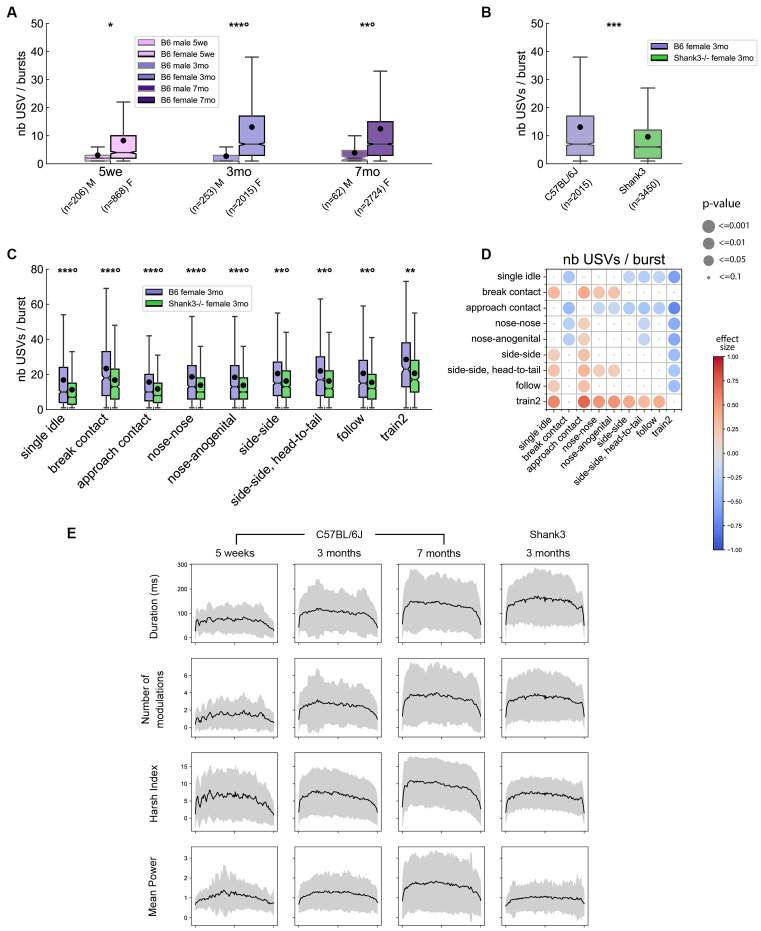Figure 7.
Bursts characteristics in male and female pairs of B6 mice and in Shank3−/− female mice. (A) Comparison of the number of USVs per burst between B6 males and females at 5 weeks, 3 months and 7 months of age (Linear Mixed Model with sex as fixed factor and pair as random factor). (B) Comparison of the number of USVs per burst between B6 females and Shank3−/− females aged 3 months (Linear Mixed Model with genotype as fixed factor and pair as random factor). (C) Comparison of the number of USVs per burst between B6 females and Shank3−/− females aged 3 months across the different contexts of emission (Linear Mixed Model with sex as fixed factor and pair as random factor). ns: not significant, uncorrected p-values: *p < 0.05, **p < 0.01, ***p < 0.001; p-values followed by ° survived a correction for multiple testing (A: age classes, B: no correction, C: number of behavioral contexts). (D) Comparison of the number of USVs per burst emitted by 3 months old B6 females between the different contexts of emission (Linear Mixed Models with context as fixed factor and pair as random factor). Blue colors indicate that the number of USVs per burst given during y-event is lower than the number of USVs per burst given in x-event; red colors indicate that the number of USVs per burst given during y-event is higher than the number of USVs per burst given in x-event; the effect size is represented by the color scale while the significance levels are represented by the size of the circles. (E) Evolution of acoustic characteristics of USVs (duration, frequency modulations, harsh index, mean power) according to their position within a burst in B6 females aged 5 weeks, 3 months, and 7 months as well as in Shank3−/− female mice aged 3 months.

